Amargosa vole
Amargosa voles are highly specialized small mammals that live only in the Mojave Desert where marshes form around natural springs and pools. They are one of the most endangered mammals in North America and are protected under the Endangered Species Act. The formal scientific name for the Amargosa vole is Microtus californicus scirpensis.
You can help!
Read about the Amargosa vole and why it's endangered, then spread the word! Follow Bailey, our spokesvole, on Facebook and Twitter @VoiceOfTheVole. We are also able to accept monetary contributions for the Amargosa Vole Conservation Project. All donations are tax deductible because UC Davis is a non-profit organization, 501(c)(3). For donations or to get involved, please contact us if you're local to the Davis area. If you're local to Shoshone or Tecopa, contact the Amargosa Conservancy and mention the vole project.
Updates from the field and the colony:
- Update on the Amargosa vole captive colony at UC Davis (pdf)
- Update on the Tecopa Marsh 1 restoration project ("The Big Fix") (pdf)
- Watch a video of baby Amargosa voles
- Watch a video of Amargosa voles consuming bulrush
- Watch a video of the first release of captively reared Amargosa voles
- Link to the CDFW Wildlife Investigations Lab blog
Information & Overview
How are Amargosa voles different from other voles? Amargosa voles are related to the California vole, but after being isolated in the desert for hundreds of thousands of years, the species has developed some unique differences. One obvious difference is the little white beards that many adult Amargosa voles have. Another, less obvious difference is the Amargosa vole's diet. Just like pandas eat only bamboo, the Amargosa vole eats only bulrush, a plant that grows in desert marshes. This makes them uniquely different from the voles we know as pests. However, it also means that Amargosa voles are highly dependent upon the natural habitat of Amargosa marshes. Part of our research is to find out what parts of the plant they most prefer and how to promote healthy bulrush growth in the wild.
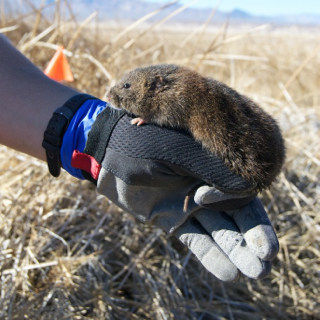
Marshes in the desert? The Amargosa River is a partially subterranean river. In other words, in many areas it flows underground. In some places, water in the Amargosa Basin breaks through the surface as a natural spring. In the midst of an expansive hot and salty landscape, small marshes of lush vegetation form oases of habitat. That's right, the Amargosa vole lives in desert oases! Of course, they're not the only ones that want to live there.....

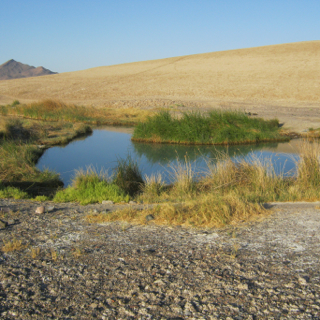
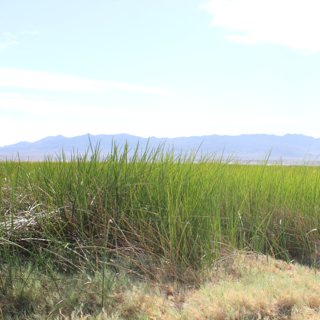
Why should we protect this vole? The marshes of the Amargosa River are stop-over habitat for migratory bird species and also permanent habitat for many endemic species, including some that are protected under the ESA. This region is even home to majestic coyote and bobcat. Some of these species, particularly raptors and water birds, rely on the Amargosa vole as a major food source. Not surprisingly, the hot springs are a favorite spot for humans too! Thankfully, the permanent residents of the area are keen to preserve the beautiful habitat that compelled them to move to the desert and we're working together with the Amargosa Conservancy and Shoshone Village to integrate sustainable practices with development strategies. By protecting the vole, we are protecting the native habitat and upholding the food web of the Amargosa River basin. Further, we are preserving a sensitive, desert water supply upon which humans and animals depend. Thus, in protecting the Amargosa vole, we are actually protecting the Amargosa ecosystem, a stunning landscape enjoyed by so many visitors for a multitude of reasons.
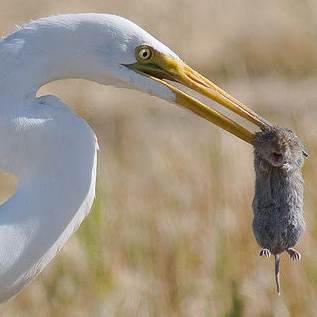
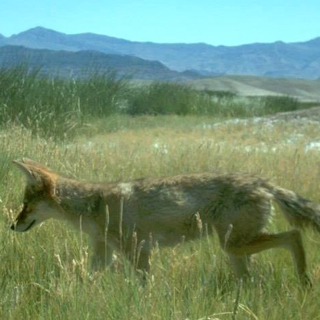
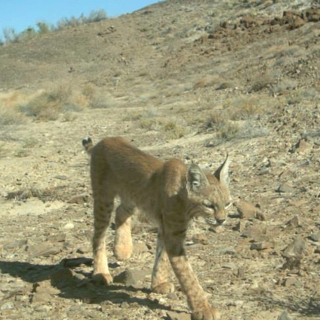
Why is the Amargosa vole endangered? Since there are often several factors contributing to the decline of a species, a major part of our research is to determine what the main threats are and which ones are playing the largest role. So far, we suspect that habitat loss, caused by both humans and climate change, is the most prominent threat to the population. Some of the marshes, including the one that has the largest Amargosa vole population, are becoming drier and losing vegetation. We're also concerned about over-predation, disease, and low genetic variability, three things that can make it difficult for a species to rebound.
What are we doing to conserve the vole? The Amargosa Vole Conservation Project is a very special endeavor because it's a collaborative effort between the UC Davis School of Veterinary Medicine, the California Department of Fish and Wildlife, the UC Berkeley Museum of Vertebrate Zoology, the Bureau of Land Management, the Amargosa Conservancy, the US Fish and Wildlife Service, the US Geological Survey, The Nature Conservancy, the Integral Ecology Research Center, and Shoshone Village. Local, state, and federal teams are pretty unique, but then again the Amargosa vole is pretty unique! With so many skilled people involved in the project, it's possible to cover the problem in many different ways. The following list of research projects are just some of the things we're studying as a team:
- Changes in marsh habitat characteristics seasonally, annually, and on long time scales as the climate shifts
- Basic ecology of the Amargosa vole such as diet, reproductive behavior, social behavior, and general life history characteristics
- The Amargosa ecosystem and how the vole is intertwined with other important species of concern
- The prevalence of natural pathogens which may affect wildlife and humans
- A captive breeding colony of Amargosa voles at UC Davis for future reintroduction to suitable marshes
- Ecotourism and education endeavors in the local towns of Shoshone and Tecopa
- Marsh habitat restoration in collaboration with the Shoshone township

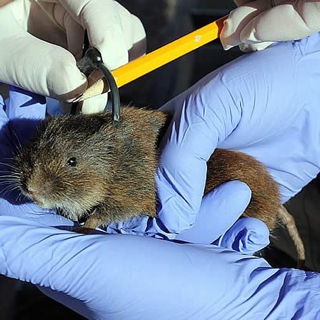
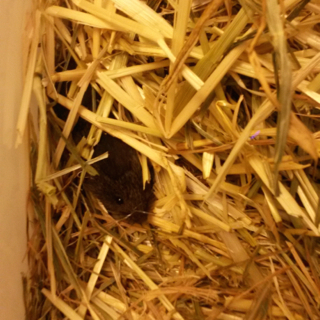
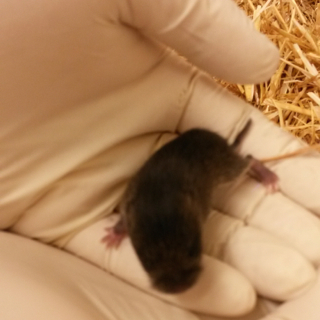
![]()
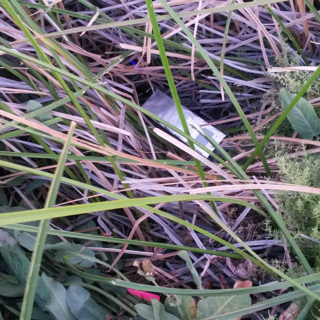
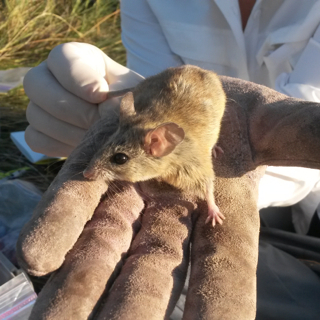
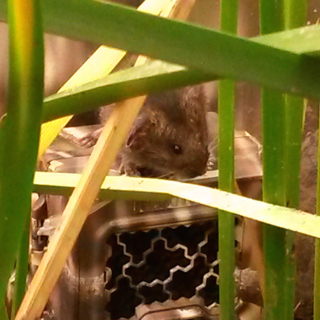
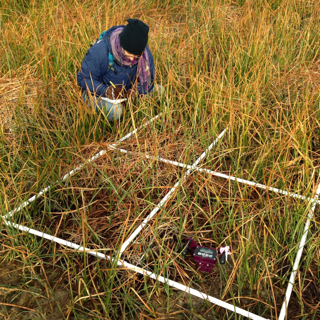

In the News: Saving the most endangered small mammal from the brink of extinction is pretty newsworthy, these folks thought so too:
- SVCnews "Plight of the Vole"
- KCET "Breeding Program May Save Desert Rodent"
- UCDavis News "Scientists work to save endagered desert mammal"
- LA Times "Faced with drought and climate change, desert mammal clings to existence" **with video**
More information on the Amargosa vole:
- Click here to see our Amargosa Vole brochure (pdf)
- California Department of Fish and Wildlife page
- Wikipedia page
- U.S. Fish and Wildlife Service page
Photo Credits:
Bob Wick, BLM; Don Priesler, UC Davis; Andrew DiSalvo, Cornell ; Risa Pesapane, UC Davis; Austin Roy, UC Davis; Chris Conroy, UC Berkeley; CDFW; endangeredspeciesearth.com; Stephanie Castle, UC Daivs
